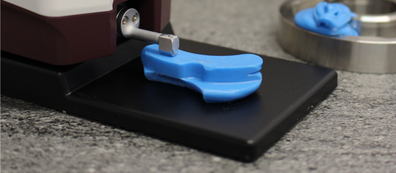Traceability is a concept that dates back over 3,800 years to ancient times.
In those distant times, people used seals or hot irons to authenticate their exchanges.
Today, traceability is ubiquitous in industry, where it provides all necessary information about a product.
This information is tracked at each stage of the production chain, from raw materials to product distribution, and even during the product’s wear after purchase.
All sectors use this concept to ensure controlled production. Traceability is defined by the international standard ISO-9001.
Table of Contents
A Simple and Understandable Definition of Traceability
Definition
Let’s review what we already know!
Traceability means having the ability to track products throughout their production chain.
Once you’ve implemented this systematic tracking concept, you aim to know Where, When, by Whom, and How a product was manufactured.
This rigorous approach allows you to improve both the quality and safety of your products.
Yes, it’s that significant…
To be even more effective, traceability is approached from two angles:
- Production chain traceability, where you monitor the product from one manufacturer (or subcontractor) to another.
- Internal traceability, where you focus on monitoring the product’s evolution throughout a specific process.
Production Chain and Traceability
As we’ve just seen, the goal here is to track the product throughout its journey, from manufacturer to manufacturer, from raw materials until the end of its product life (whether through recycling or disposal).
What we aim to establish is a complete history of all operations performed on a product, along with associated metrics (dimensions, surface condition, weight, etc.).
There are several advantages to implementing this procedure:
- Manufacturers have access to information that helps them effectively handle product recalls and identify production defects
- Consumers have access to complete product information (origin, composition, etc.)
- Manufacturers can require their subcontractors to verify the compliance of components entrusted to them for production
Of course, implementation is demanding – you’ll need to establish detailed procedures and account for the time-consuming nature of their execution.
Internal traceability
Here, we shift perspective! The reference point is no longer the production chain but a more specific element within it: the company itself.
In this case, we focus solely on company processes, from upstream suppliers in the chain to downstream suppliers.
Within this category, we distinguish more specific subcategories of internal traceability:
- Process Traceability: This involves collecting and processing information during manufacturing processes. This information is linked to the product’s unique identifier, making it very easy to retrieve the information.
- Parts Control Traceability: This involves implementing monitoring of parts wear. This includes recurring wear, but also encompasses conformity with specifications: for example, whether dimensions were correct after machining.
It’s crucial that all tracking is linked to its reference point (product, process, etc.). This way, you can easily identify flaws and malfunctions and respond quickly.
The importance of Traceability
Industrial processes are highly complex.
For example, part of the production might be outsourced to Asia while the company has another product component manufactured by its Latin American subsidiary.
Everything is finally assembled in France once all parts are returned.
This complexity makes it challenging for companies to ensure product quality.
Moreover, when a customer reports a malfunction, the manufacturer must be able to identify the problem’s origin to determine:
- Whether the malfunction is isolated or systematic
- Which process/facility is the source of the problem
Traceability is therefore essential in product quality control, particularly in risk identification and prevention.
If you know the state of a product or component at any given time, you can identify the source of a problem much more quickly. Furthermore, if the malfunction affects an entire production run, the company must be able to implement a rapid recall (For example, in case of an aircraft engine malfunction).
Traceability Through Impression taking
And How does Plastiform contribute to traceability?
It absolutely does!
Plastiform products ensure traceability of several elements:
- Component or part dimensions
- Surface roughness conditions
- Visual defect inspection
TThe imprint captures the part’s condition at the moment of polymerization.
Depending on the product and application, you can preserve physical evidence of the part’s condition at the time of inspection, which can be invaluable for analysis.
How should I preserve my Plastiform imprints?
First crucial point: the imprint must be stored in an airtight bag, protected from any handling.
Plastiform products have shape memory, meaning they maintain their form over time.
However…
If the imprint is subjected to handling, there’s a risk of damage.
So keep your imprints well protected!
Also, use non-contact measuring instruments!
For example, a roughness meter that repeatedly traces the same imprint might scratch it with its stylus…
And that is definitely not what we’re aiming for!me print several times may scratch it with its needle, and this is not the intended purpose!
The Case of Visual Surface Finishing
Plastiform offers a significant advantage in the specific case of visual defect inspection.
As shown in the image below, using Plastiform allows for more precise inspection of surface defects compared to examining the surface itself.
As a bonus, you can preserve the image of this defect on the imprint.
Convenient, isn’t it?
Thanks to its black color and colorimetric properties, F30 Visual produces such excellent results.
Don’t doubt its precision – it can even replicate printed ink on a document!
This is quite practical, and furthermore, the imprint can ensure the traceability of a defect.
One might wonder why bother – if the part is defective, why not just send it directly?
Well, it depends on the situation. If the defect is found on a part that’s difficult to move or disassemble, it might be more sensible to simply send the F30 Visual copy!
It’s up to you to evaluate the most appropriate approach, but rest assured, Plastiform can help you with this!
Conclusion
Traceability is a crucial element in quality control. Tracking products and processes is vital to enable companies to react quickly and effectively in case of malfunction.
International quality management standards are grouped in the ISO 9000 series. ISO 9001 is the standard that specifies the concept of traceability in two sections: measurement traceability and identification and traceability.
Finally, Plastiform imprints can assist in traceability operations by preserving the condition of a part at the moment the imprint is taken.



